2021 is proving to be an eventful year for online advertisers and small businesses that rely on advertising to attract new customers.
At the start of this year Facebook started releasing updates to their ad platform because of the expected iOS14 updates and changes are coming fast.
We don’t fully know the impact of iOS14 and what it means for advertisers yet.
And it’s likely we won’t be able to understand the impact until later in the year after Apple starts requiring “the prompt” and a significant number of users have upgraded their devices to iOS14.5+.
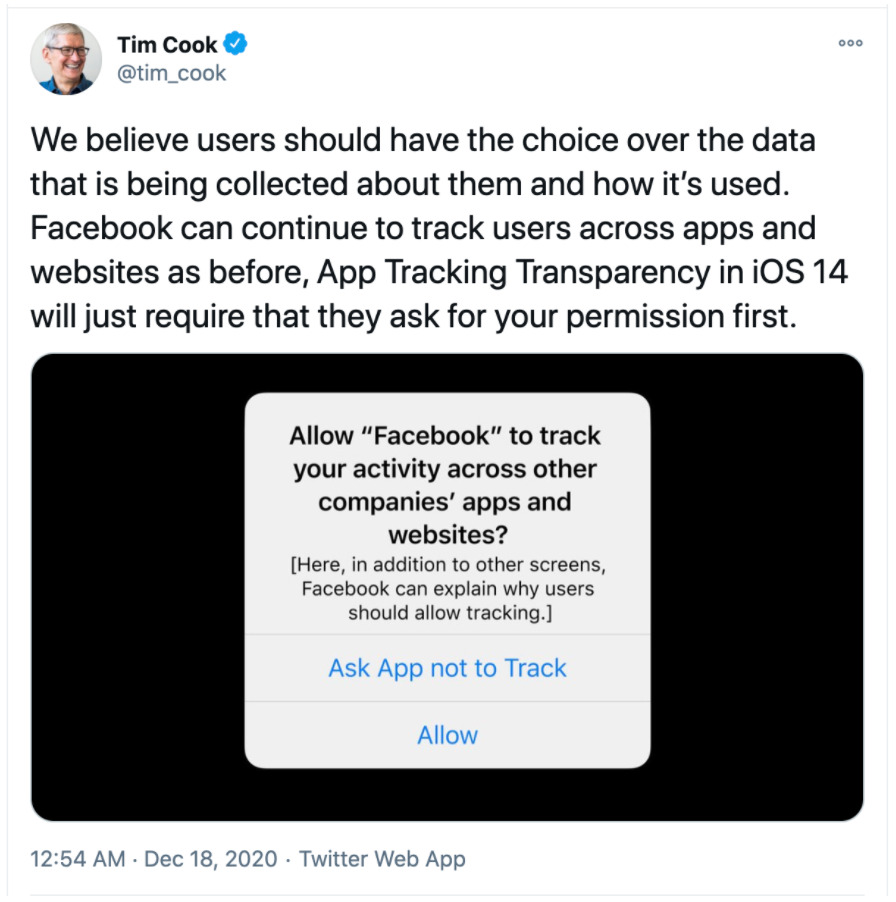
What we do know is that if you want to keep leveraging Facebook’s ad platform for your business it’s time to take action now.
In this post we’re going to cover some important steps all facebook advertisers can take to move forward.
Table of Contents
iOS14 Updates for Facebook Advertisers
Step 1) Verify Your Domain
Facebook will now require all domains to be verified inside the business manager.
This is probably the easiest thing you can do right now to get started.
Here is the 5 step checklist we send to all our clients to verify their domain with Facebook.
It took me a total of 4 minutes to do this for our ad accounts.
Step 2) Choose Your 8 Events For Your Account
All ad accounts now have this new “Resource Center” in the corner you can use to help walk you through the technical changes inside accounts.
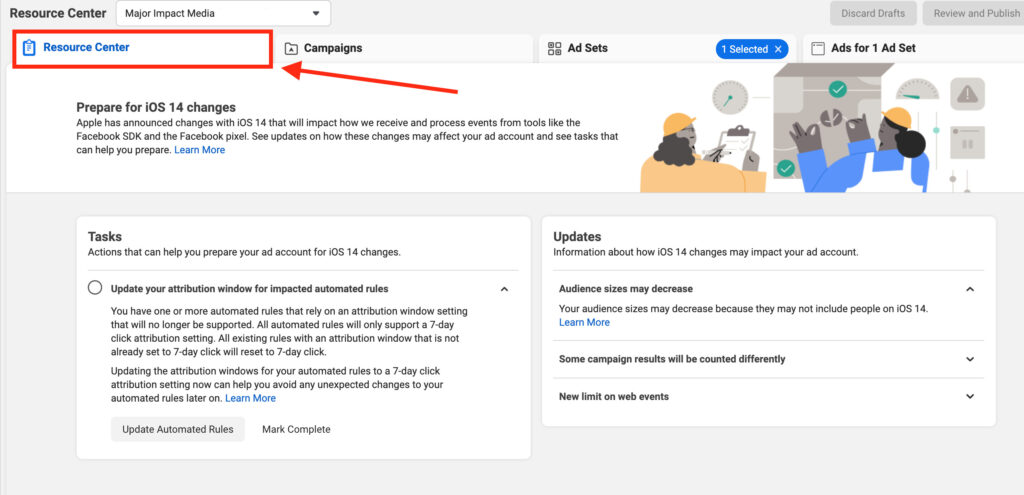
Inside there somewhere you should see a link to choose your 8 events.
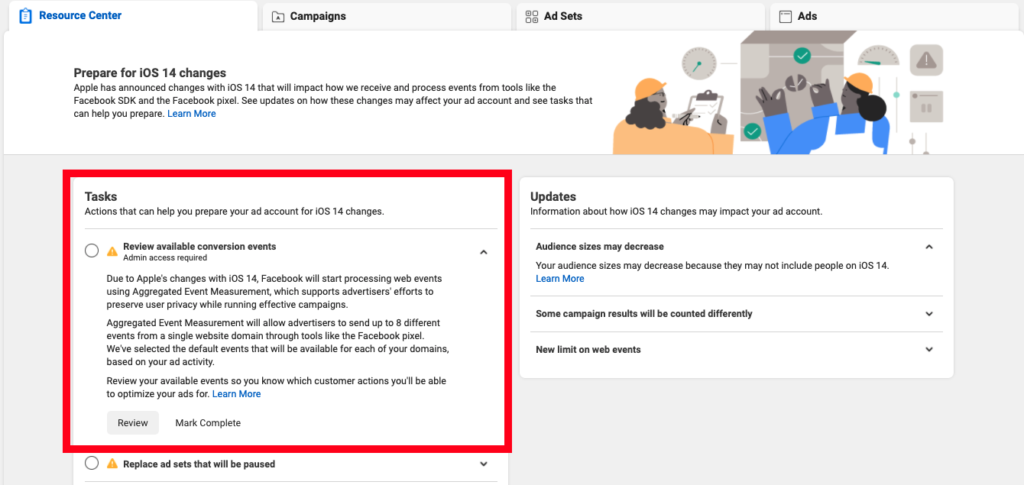
These are the events that you will be able to optimize your campaigns for and see reported back when someone has opted out of being tracked after the prompt roll out.
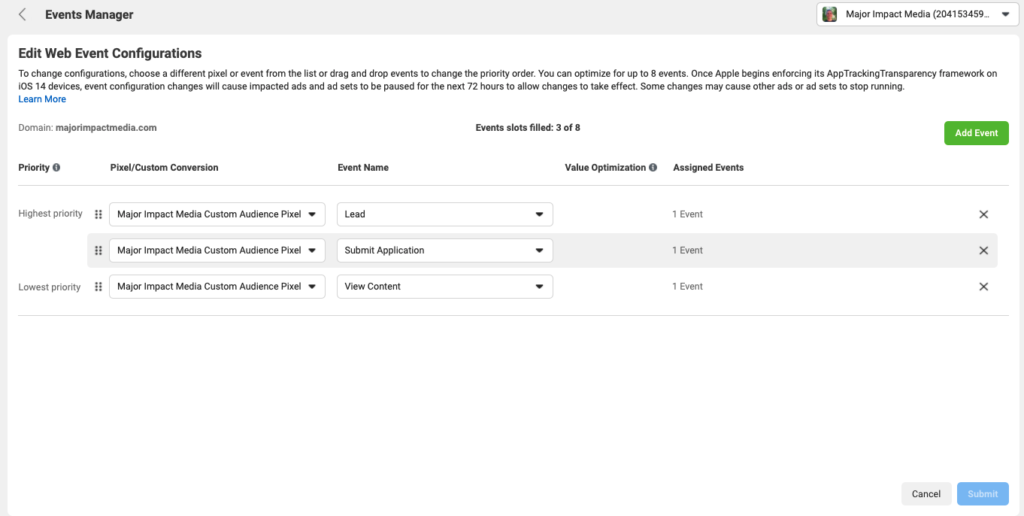
For most info product businesses without a lot of products this shouldn’t be a huge deal.
Prioritize your most important bottom of the funnel events first (like Purchase) and work your way backward through the funnel (Add to Cart, Webinar View, Leads, etc) for events 1 – 8.
If you have lots of products I would focus on the most important actions (probably leads and sales) for each product.
Step 3) Set Up 3rd Party Attribution Tracking
As marketers and business owners we’ve pretty much been living in the golden age of having access to a ton of data at our fingertips.
As the movement towards more privacy continues, a lot of that data will likely go back into the black box.
But there are steps you can take to make sure you continue to get useful, actionable data back when you invest in advertising.
One of the best steps most businesses can take right now is to set up 3rd party attribution tracking.
Basically answering the question of “How are you going to measure the impact and effectiveness of your marketing when Facebook can’t share that data with you?”
There are great free and paid solutions out there.
The “free” solution to this is Google Analytics and Google’s free website tracking tools.
I say “free” because Google Analytics does not come out-of-the-box ready.
It takes a lot of expertise to set up and manage Google Analytics for useful data.
But if you have someone on your team or the resources to do it it’s a great tool and Google is one of the companies leading the charge to prepare advertisers for a cookieless world.
Right now our current go-to 3rd party attribution tool for tracking is Wicked Reports.
It’s not perfect, but out of the box it can help you measure the effectiveness of your advertising dollars on both Facebook and Google without a lot of customization and management.
Wicked Reports is able to pull together the data from your CRM, shopping cart and ad platforms to stitch together the value of your customers over time and attribute that back to the source of how they originally discovered your business.
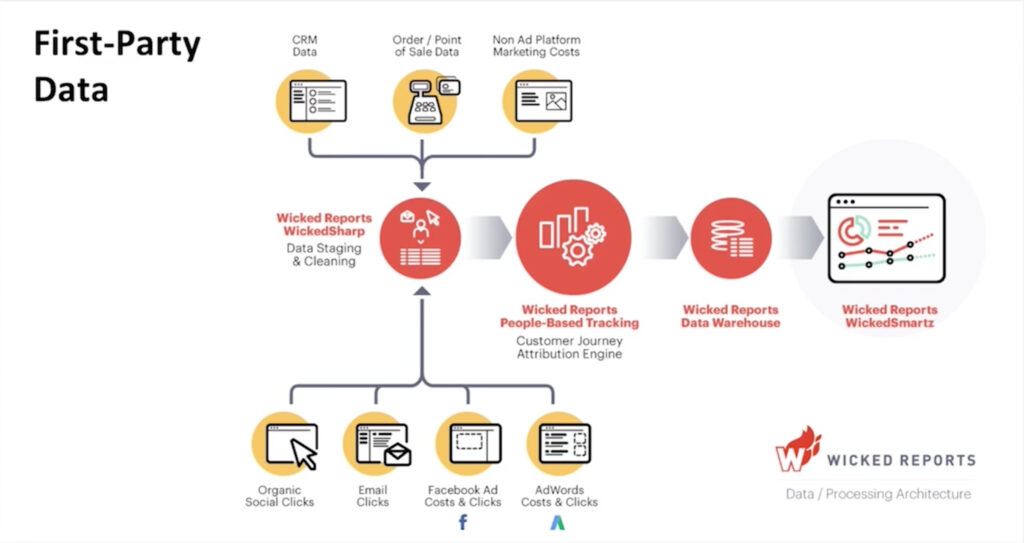
They also have a support team to help you with anything you need to make adjustments or set up new tracking solutions as your business grows.
Step 4) 2 Step Authentication For Everyone In Your Business Manager
This one might not seem super relevant to the iOS14 rollouts, but after years of working with Facebook I can tell you when a lot of updates start happening accounts start getting shut down.
Algorithms start getting updated, things get sensitive, ads get disapproved, and the ban hammer comes down.
Happens every time.
One of the easy wins to help make sure Facebook knows you and your team are real advertisers and not spammers is to make sure that everyone in your business manager has 2 step authentication for their Facebook account.
This is something they have been encouraging for a while.
With the new updates our whole agency went through and made sure every person on the team with access has it so we have less of a chance to run into any issues.
Step 5) Get Ready To Implement Conversion API Tracking
While a platform like Google Analytics or Wicked Reports will help you measure the performance of your campaigns in the long run, we still need a way to send back important actions to Facebook so their algorithm can optimize campaigns.
That’s where the Conversion API comes into place.
Facebook has said they want all advertisers to implement the Conversion API.
Basically what this does is move all the data the Facebook pixel would normally capture in the browser to your servers.
Your server stores the data and passes that back to Facebook directly instead of being passed through the browser.
They expect that companies will have both the Facebook pixel in the browser and send the data through server-side tagging and the conversion API.
This does not solve the tracking and optimization issues all together but Facebook has said this should be prioritized as one of the most important actions advertisers can make to keep sending the Facebook algorithm the data it needs to optimize.
This one is challenging since it takes a developer with some experience to set this up.
Simo Ahava has a detailed post on how to set up server-side tagging with Google Tag Manager server-side tagging.
But if you give that a quick read you’ll see it’s not as easy as regular pixel tracking.
If you’re investing any serious amount of money into Facebook ads it makes sense to get this done as quickly as you can.
If you’re on a budget it’s very likely that sometime in the future apps and software tools will make this way more simple to implement.
Step 6) Create A Plan To Measure More Holistically
This is one mindset shift that we will all have to make as we move forward.
Looking into the future the truth is we will likely have less data available to use as marketers as privacy becomes more important to users online.
The “measure every single action of every single person through the funnel” mindset is going to have to change to a “measuring the results of our campaigns holistically.”
Rather than looking at how Facebook sales are performing and how YouTube or Google sales are performing, we’re going to have to start to measure the overall lift of revenue when we start running new ad campaigns.
Every time we start running ads for a company on Facebook or YouTube we see brand searches go up and organic sales go up. It’s the advertising lift effect. People see you and start to research you.
They follow you online for weeks, months or even years before becoming a customer.
As we move forward it’s going to be time to start looking at how our advertising budget is driving sales holistically when less data is available to us in the ad platforms.
That means better tracking of sales and revenue on the back end and less detailed tracking on each step of the funnel.
Step 7) Diversify Your Traffic Sources
I can’t think of many times in life it’s good to put all your eggs in one basket, but now if definitely not one of them.
If your business is 100% dependent on getting traffic from Facebook you are in a dangerous position.
For all our clients selling infoproducts online we focus on getting a funnel profitable with one traffic source first.
Then as soon as we know the funnel and the messaging is working we diversify our traffic with another platform.
Right now I’m very bullish on YouTube for infoproducts.
We’ve seen huge results taking the message that works on Facebook and putting it into a 2 -3 minute video script.
As your business grows you should be taking some of the revenue from one traffic source and moving it into developing marketing channels.
Over time you grow from getting started on one advertising platform to having multiple ad platforms and even an organic content strategy.
That way when the next big update comes out (and you can be sure it will) you’re not too exposed to having your revenue wiped out by something you can’t control.
The Facebook Advertisers iOS14 Action Checklist
To sum it all up, here are the 7 actions you can start taking right now to prepare for iOS14:
- Verify Your Domain
- Choose Your 8 Events For Your Account
- Set Up 3rd Party Attribution Tracking
- 2 Step Authentication For Everyone In Your Business Manager
- Get Ready To Implement Conversion API Tracking
- Create A Plan To Measure More Holistically
- Diversify Your Traffic Sources
With those 7 items checked off the list you’re in a good place for your ad campaigns rolling as the changes continue to come out.

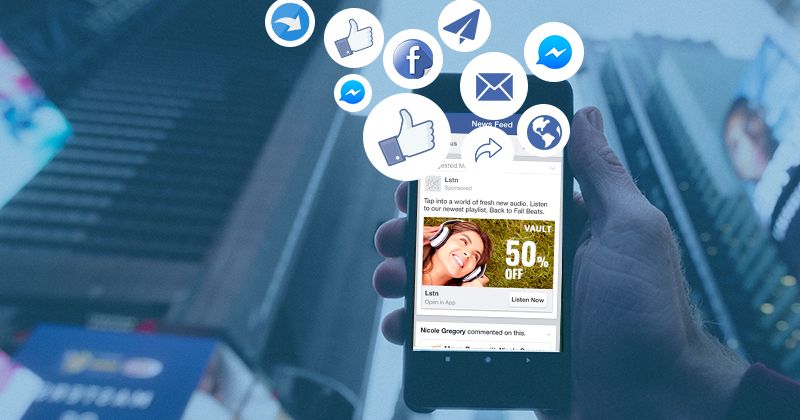
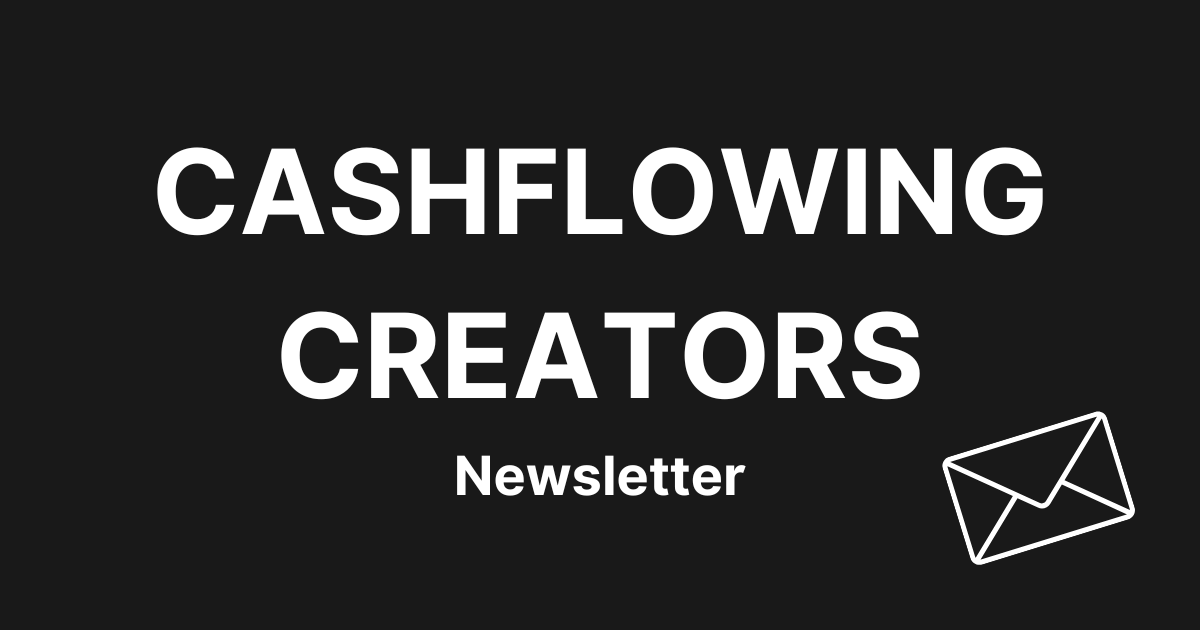
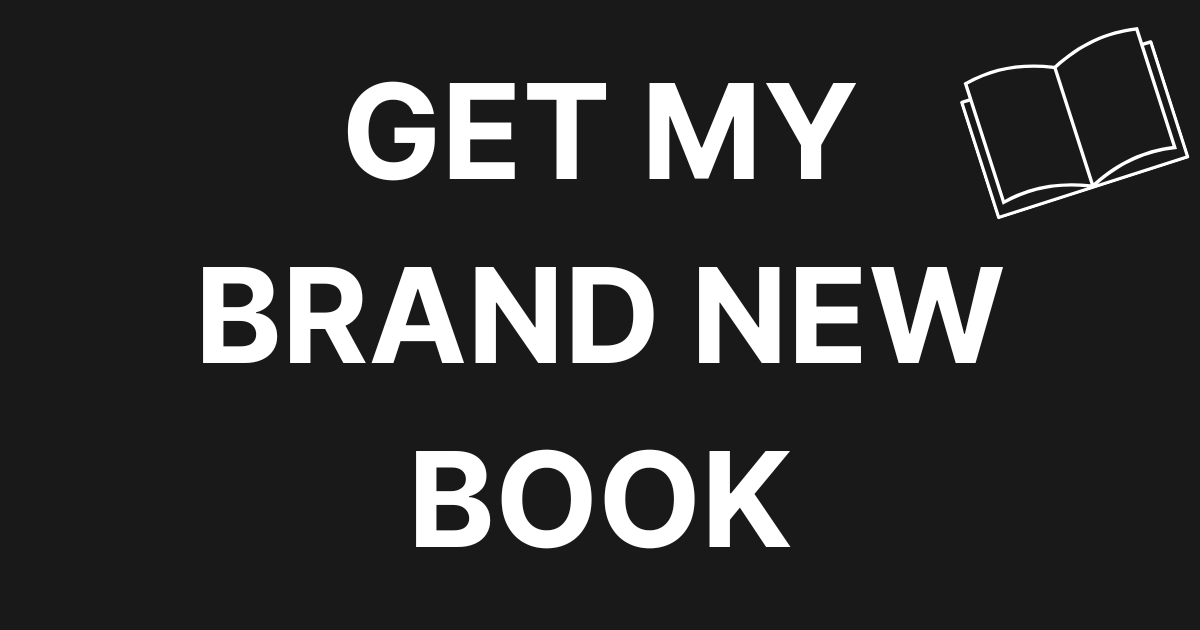
0 Comments